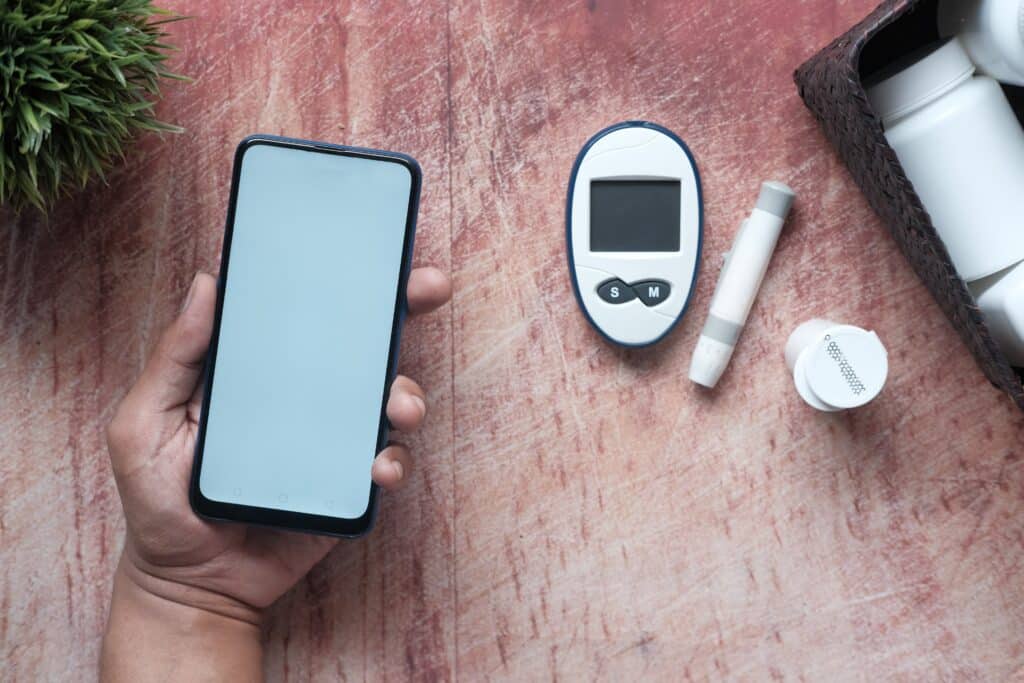Millions of people around the world suffer from diabetes (both type 1 and 2), and the prevalence is rising rapidly. According to the World Health Organization (WHO), diabetes was the ninth leading cause of death in the year 2019, with an estimated 1.5 million deaths directly related diabetes. It’s also a leading cause of blindness, kidney failure, heart attacks, strokes, and lower-limb amputations.
So, in light of this and in support of World Diabetes Day, (happening on the 14th of November), we decided it would be fitting to bring awareness to the early signs and symptoms of diabetes.
Diabetes: A Look at the Facts
Diabetes is a chronic disease occurring either when the pancreas does not produce enough insulin or when the body can’t effectively use the insulin it naturally produces.
Insulin is a hormone that regulates the body’s blood sugar. Raised blood sugar levels, or hyperglycemia, is a common effect of uncontrolled diabetes and in time, causes serious damage to many bodily functions, especially within the nerves and blood vessels.
What Are The Different Types Of Diabetes?
Type 2 Diabetes
Over 95% of people who suffer from diabetes have type 2 diabetes.
Previously known as non-insulin-dependent, or adult-onset, type 2 diabetes is caused when the body uses insulin ineffectively. This type is primarily caused by excess body weight and physical inactivity. The symptoms of type 2 diabetes are similar to those of type 1 – but are less obvious, which is often why it’s usually only diagnosed years after its onset and after complications have already arisen.
Up until recently, type 2 diabetes was only common in adults but it is starting to become more common among children too.
Preventative measures can help delay the onset of type 2 diabetes, most of which are linked to lifestyle changes like maintaining a healthy body weight and avoiding tobacco.
Type 1 Diabetes
Previously known as insulin-dependent, juvenile, or childhood-onset, type 1 diabetes is defined by an insulin production deficiency and requires patients to administer daily insulin dosages. Neither the causes, or preventative measures of type 1 diabetes are known.
Gestational Diabetes
Hyperglycaemia or gestational diabetes is when blood glucose levels are above normal but are below levels considered diagnostic of diabetes. This kind of diabetes occurs during pregnancy and is diagnosed through prenatal screening. Women who suffer from it are at an increased risk of complications during both their pregnancy and at delivery. In addition, these women and possibly their children are at an increased risk of type 2 diabetes in the future.
Impaired Glucose Tolerance & Impaired Fasting Glycaemia
Impaired glucose tolerance (IGT) and impaired fasting glycemia (IFG) are conditions that occur during the transition between normality and diabetes. Although not inevitable, people who have either of these conditions are at high risk of progressing to type 2 diabetes.

The Early Signs & Symptoms Of Diabetes?
Most early symptoms of diabetes stem from higher-than-normal levels of blood glucose. Often the warning signs are so mild that people don’t notice them – especially in cases of type 2 diabetes. When it comes to type 1 diabetes, symptoms usually arise quickly (in a matter of days or weeks) and are much more severe too. However, both types of diabetes have similar tell-tale signs.
Hunger & Fatigue
The body converts food into glucose, which your cells use to create energy. But in order for this to happen, your cells need insulin to take in the glucose. So, if your body does not produce enough (or any) insulin, or if your cells resist the insulin that’s produced, glucose can’t get into the cells, and you have no energy. Naturally, this can make you feel hungrier or more tired than usual.
Increased Urination & Thirst
Another common symptom of diabetes is feeling the urge to urinate more and being thirstier than usual. The average person typically has to pee between 4 and 7 times in 24 hours, but people suffering from diabetes may go to the bathroom a lot more.
This is because usually, your body reabsorbs glucose as it passes through your kidneys. Since diabetes causes your blood sugar levels to rise, your kidneys can’t reabsorb it, causing your body to produce more urine. And since you need to go more often, it makes you thirstier.
Dry Mouth & Itchy Skin
Since your body is using fluids to produce more urine, there’s less moisture available for other processes. You could get dehydrated, and your mouth may feel dry. Also, dry skin can make you feel itchy.
Blurred Vision
Since your fluid levels aren’t stable this may cause the lenses in your eyes to swell up, change shape, and make it harder to focus.
Yeast Infections
Both men and women with diabetes tend to suffer from recurring yeast infections, which show up when your glucose levels have been high for a long time. Therefore, they are more common in people with type 2 diabetes. The reason is because yeast feeds on glucose – so typically, having more glucose makes inflectional bacteria breed more quickly – especially between moist folds of skin, including:
- Under breasts or in and around sex organs
- Between fingers and toes
Slow-Healing Cuts Or Sores
Over time, high blood sugar can affect your blood flow and may cause nerve damage, making it harder for your body to heal wounds.
Pain Or Numbness
Another result of nerve damage is experiencing pain or numbness in the feet or legs.
Unplanned Weight Loss
If your body can’t get enough energy from your food, it will naturally start burning muscle and fat instead. The result is weight loss, even if your eating patterns haven’t changed.
Nausea & Vomiting
When your body starts burning fat it produces ketones, which can build up in your blood until it reaches dangerous levels, becoming a potentially life-threatening condition known as diabetic ketoacidosis. These may cause you to literally feel sick to your stomach.

Warning Signs of Diabetes Complications
Diabetic Coma
The official name is hyperosmolar hyperglycemic nonketotic syndrome (HHNS) – and this complication may lead to a diabetic coma and even death. It occurs when your blood sugar levels rise too much and your body experiences severe dehydration.
Symptoms of a diabetic coma include:
- Blood sugar levels over 600 mg/dl
- Parched or dry mouth
- Warm or dry skin that doesn’t sweat
- High fever
- Sleepiness or confusion
- Vision impairment
- Hallucinations
- Weakness on one side of the body
Other warning signs may include:
- Slow-healing cuts or sores
- Itchy skin (generally around the genital area)
- Recent weight gain or loss
- Changes in skin color around neck, armpit, and groin area called acanthosis nigricans
- Frequent yeast infections
- Numbness or tingling in hands and feet
- Decreased vision
- Impotence or erectile dysfunction
- Hypoglycemia – which may cause:
- Shakiness
- Sweats and chills
- Nervousness or anxiety
- Confusion, lightheadedness, and dizziness
- Increased hunger
- Increased fatigue
- Feeling weak
- Tingly or numb lips, tongue, and cheeks
When To Call Your Doctor
If you are over the age of 45 and have other risk factors for diabetes its essential to get tested. The key is spotting the condition early to avoid nerve damage, heart trouble, and other complications.
If you need to see a doctor, download the Air Doctor app for Android or iOS to find a practitioner in your area.
Tips for Living with Diabetes
People suffering from diabetes can still do things to help manage their condition and enjoy a healthier life. It’s important to realize that you don’t get good at dealing with diabetes overnight, but in time you’ll find out how what works for you and your lifestyle.
Make Healthy Choices
Eating well is an important basic of keeping your body healthy and functioning – especially if you have diabetes since what you eat affects your blood sugar.
Make sure you’re getting plenty of vegetables, fruits, and whole grains. Limit foods that are high in sugar and fat. Try to make time to cook instead of ordering food or going out to eat. Consider weekly meal prep. Find budget-friendly recipes online that are healthy and easy to cook so you can plan your meals for the week.
Another aspect of being healthy is ensuring you don’t consume too much alcohol, which can wreak havoc on your blood sugar. And if you’re a smoker, consider quitting because this habit increases your risk of developing other diseases.
Keep Moving
Exercise is one of the best tools for managing diabetes. If you’re not active now, it’s time to start. And you don’t have to join a gym or start jogging either. Just find little ways to be active during your day, even if it’s a short walk after work or taking the stairs.
Aim for 30 minutes of physical activity most days of the week. Find something that you enjoy that works for you and stick to it. Maintaining an active lifestyle helps you control your diabetes by lowering your blood sugar. Plus, it’s a great stress reliever – bringing us to our next point.
Manage Stress Levels
When you’re stressed, your blood sugar levels go up. And when you’re anxious, you might not always manage your diabetes well. Life can be disruptive, and you might forget to exercise, eat right, or take your medication when you’re meant to.
A big part of living with diabetes is finding ways to relieve stress – whether through meditation, yoga, deep breathing techniques or even by doing hobbies that are relaxing. It’s important to make time to slow down and relax.
Get Your Checkups
It’s important to stay on top of your doctor visits. See your doctor at least two times every year. Having diabetes also means you have increased risks of heart disease, so make sure your doctor is keeping an eye on your cholesterol, blood pressure, and A1c (average blood sugar over 3 months). Keeping your doctor involved ensures you are aware of whether what you’re doing is working.
Stay Educated
Learning about diabetes self-management and support services can help you develop skills to manage diabetes when you’re first diagnosed and thereafter.
You can search online local directories like the American Association of Diabetes Educators’ for a list of educators in your area.












